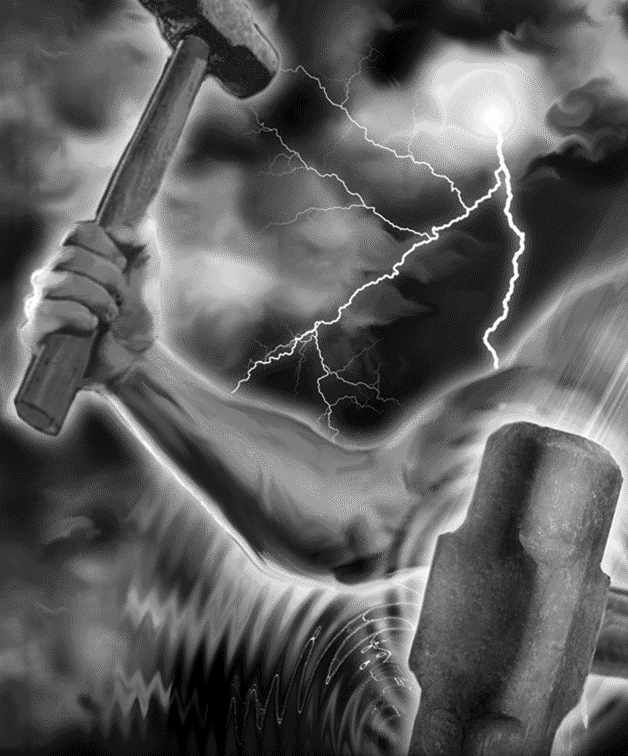
From the perspective of American Kenpo as an entire system, the forms division is known as the moving basics. These maneuvers are designed to teach, demonstrate, and enhance the knowledge base of not only the motions of the system, but also provide a mental framework for the practitioner to learn and use in understanding the art as a whole. As an individual form, every form of the system has a defined set of topics of information that it concentrates upon. From a holistic point of view, the information is composed in such a way as to provide a foundation on which subsequent forms are built. This relatively narrow set of information can be referred to as the major and minor themes of the form; with the terms minor and major describing upon how prevalent and important that theme is within the form itself, and potentially within the division (or system) as a whole.
Because of this strategic design, every form can be said to have focal points. A focal point, from the perspective of these guides, are maneuvers (individual or a sequence) that can be clearly called out as specifically contributing to the theme(s) of the form. And, although every maneuver of a form has meaning and relevance within the system (i.e. there is no meaningless motion), these specific maneuvers are areas within the form that are emblematic in this regard.
These focal points can be broken down into various groups, depending upon how one wishes to categorize them. For the purposes of this guide, the categories will be as follows:
1)Common - i.e., information that is generally known and taught
2)Less Common - i.e., information that is known and sometimes taught, but generally to advanced expect for experienced practitioners
3)Obscure - i.e., information that is often overlooked, forgotten, not taught, and/or obscure in nature
4)Speculative - i.e. information that is considered by some practitioners to be established knowledge, but is not overwhelmingly agreed upon by everybody
And, although focus points are very useful in understanding the information presented within forms, they are not intended to be a comprehensive type of analysis of the form. Instead focus points should be used in conjunction with a more complete examination into the information. In other words, focus points can be construed as an entry point into a more comprehensive analysis of a form's maneuvers and knowledge base.
Within this guide, the "Analysis" chapter is where a more comprehensive overview of said information is located. And as stated, this section should be used along with the analysis section as a way of learning and examining the form's information in more detail.